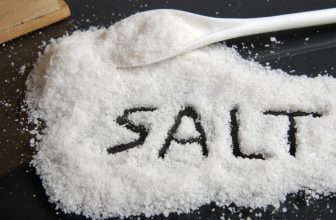
Caffeine in coffee and other caffeinated drinks can affect gastrointestinal motility and gastric acid secretion. In postmenopausal women, high caffeine consumption can accelerate bone loss.
Acute ingestion of caffeine in large doses (at least 250–300 mg, equivalent to the amount found in 2–3 cups of coffee or 5–8 cups of tea) results in a short-term stimulation of urine output in individuals who have been deprived of caffeine for a period of days or weeks. This increase is due to both a diuresis (increase in water excretion) and a natriuresis (increase in saline excretion); it is mediated via proximal tubular adenosine receptor blockade. The acute increase in urinary output may increase the risk of dehydration. However, chronic users of caffeine develop a tolerance to this effect and experience no increase in urinary output.
Minor undesired symptoms from caffeine ingestion not sufficiently severe to warrant a psychiatric diagnosis are common and include mild anxiety, jitteriness, insomnia, increased sleep latency, and reduced coordination. Caffeine can have negative effects on anxiety disorders. According to a 2011 literature review, caffeine use is positively associated with anxiety and panic disorders. At high doses, typically greater than 300 mg, caffeine can both cause and worsen anxiety. For some people, discontinuing caffeine use can significantly reduce anxiety. In moderate doses, caffeine has been associated with reduced symptoms of depression and lower suicide risk.
Increased consumption of coffee and caffeine is associated with a decreased risk of depression.
Some textbooks state that caffeine is a mild euphoriant, others state that it is not a euphoriant, and one textbook states in one place that caffeine is not a euphoriant but in another place groups it among euphoriants.
Caffeine-induced anxiety disorder is a subclass of the DSM-5 diagnosis of substance/medication-induced anxiety disorder.
Whether caffeine can result in an addictive disorder depends on how addiction is defined. Compulsive caffeine consumption under any circumstances has not been observed, and caffeine is therefore not generally considered addictive. However, some diagnostic models, such as the ICDM-9 and ICD-10, include a classification of caffeine addiction under a broader diagnostic model. Some state that certain users can become addicted and therefore unable to decrease use even though they know there are negative health effects.
Caffeine does not appear to be a reinforcing stimulus, and some degree of aversion may actually occur, with people preferring placebo over caffeine in a study on drug abuse liability published in an NIDA research monograph. Some state that research does not provide support for an underlying biochemical mechanism for caffeine addiction.Other research states it can affect the reward system.
“Caffeine addiction” was added to the ICDM-9 and ICD-10. However, its addition was contested with claims that this diagnostic model of caffeine addiction is not supported by evidence. The American Psychiatric Association’s DSM-5 does not include the diagnosis of a caffeine addiction but proposes criteria for the disorder for more study.
Withdrawal can cause mild to clinically significant distress or impairment in daily functioning. The frequency at which this occurs is self-reported at 11%, but in lab tests only half of the people who report withdrawal actually experience it, casting doubt on many claims of dependence. Mild physical dependence and withdrawal symptoms may occur upon abstinence, with greater than 100 mg caffeine per day, although these symptoms last no longer than a day. Some symptoms associated with psychological dependence may also occur during withdrawal. The diagnostic criteria for caffeine withdrawal require a previous prolonged daily use of caffeine. Following 24 hours of a marked reduction in consumption, a minimum of 3 of these signs or symptoms is required to meet withdrawal criteria: difficulty concentrating, depressed mood/irritability, flu-like symptoms, headache, and fatigue. Additionally, the signs and symptoms must disrupt important areas of functioning and are not associated with effects of another condition
The ICD-11 includes caffeine dependence as a distinct diagnostic category, which closely mirrors the DSM-5’s proposed set of criteria for “caffeine-use disorder”. Caffeine use disorder refers to dependence on caffeine characterized by failure to control caffeine consumption despite negative physiological consequences. The APA, which published the DSM-5, acknowledged that there was sufficient evidence in order to create a diagnostic model of caffeine dependence for the DSM-5, but they noted that the clinical significance of the disorder is unclear. Due to this inconclusive evidence on clinical significance, the DSM-5 classifies caffeine-use disorder as a “condition for further study”.
Tolerance to the effects of caffeine occurs for caffeine-induced elevations in blood pressure and the subjective feelings of nervousness. Sensitization, the process whereby effects become more prominent with use, occurs for positive effects such as feelings of alertness and wellbeing. Tolerance varies for daily, regular caffeine users and high caffeine users. High doses of caffeine (750 to 1200 mg/day spread throughout the day) have been shown to produce complete tolerance to some, but not all of the effects of caffeine. Doses as low as 100 mg/day, such as a 6 oz cup of coffee or two to three 12 oz servings of caffeinated soft-drink, may continue to cause sleep disruption, among other intolerances. Non-regular caffeine users have the least caffeine tolerance for sleep disruption. Some coffee drinkers develop tolerance to its undesired sleep-disrupting effects, but others apparently do not.
A protective effect of caffeine against Alzheimer’s disease and dementia is possible but the evidence is inconclusive. It may protect people from liver cirrhosis. Caffeine may lessen the severity of acute mountain sickness if taken a few hours prior to attaining a high altitude. One meta analysis has found that caffeine consumption is associated with a reduced risk of type 2 diabetes. Regular caffeine consumption reduces the risk of developing Parkinson’s disease and slows the rate of progression of Parkinson’s disease. Caffeine consumption may be associated with reduced risk of depression, although conflicting results have been reported.
Caffeine increases intraocular pressure in those with glaucoma but does not appear to affect normal individuals.
The DSM-5 also includes other caffeine-induced disorders consisting of caffeine-induced anxiety disorder, caffeine-induced sleep disorder and unspecified caffeine-related disorders. The first two disorders are classified under “Anxiety Disorder” and “Sleep-Wake Disorder” because they share similar characteristics. Other disorders that present with significant distress and impairment of daily functioning that warrant clinical attention but do not meet the criteria to be diagnosed under any specific disorders are listed under “Unspecified Caffeine-Related Disorders”.





